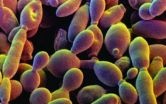(Press-News.org) INDIANAPOLIS – A study by researchers from the schools of science and medicine at Indiana University-Purdue University Indianapolis examines the effects of carbon nanoparticles (CNPs) on living cells. This work is among the first to study concentrations of these tiny particles that are low enough to mimic the actual exposure of an ordinary individual.
The effects on the human body of exposure to CNPs -- minute chemicals with rapidly growing applications in electronics, medicine, and many other fields -- is just beginning to be revealed. Exposure at the level studied by the IUPUI researchers is approximately equivalent to what might be the result of improperly disposing of an item such as a television or computer monitor containing CNPs, living near a CNP producing facility, or working with CNPs.
The research, published in the September 2011 issue of the journal Nanotoxicology, focuses on the effect of low concentration CNP exposure on the cells that line the renal nephron, a tubular structure inside the kidney that makes urine. The investigators found the role of the CNPs in this part of the body to be significant and potentially worrisome.
"Unlike many other studies, we have used low concentrations of CNPs that are typical of what might appear in the body after ingesting them from environmental contamination or even from breathing air with CNPs. We found that these minute particles cause leakage in the cellular lining of the renal nephron," said study first author Bonnie Blazer-Yost, Ph.D., professor of biology at the School of Science at IUPUI and adjunct professor of cellular and integrative physiology and of anatomy and cell biology at the IU School of Medicine.
"Breaching this biological barrier concerns us because things that should be retained in the forming urine can leak back into the blood stream and things in the blood can leak into the urine. Normal biological substances as well as waste products are dangerous if they go where they are not supposed to be," Blazer-Yost said.
"These CNPs don't kill cells – so they are not lethal, but they do affect cells, and in this case it's an adverse effect," said corresponding and senior author Frank Witzmann, Ph.D., professor of cellular and integrative physiology and of biochemistry and molecular biology at the IU School of Medicine and adjunct professor of biology at the School of Science.
Biological barriers are very important to human health. The most well understood is the skin, but there are many others. "The human body needs intact barriers, whether it be skin, airway linings, gut walls or the kidney cells we looked at in this study. We need to gain a better understanding of how CNPs modify and change characteristics of barriers as these tiny particles become more common in the air we breathe," said Witzmann.
The two researchers note that these incredibly strong particles, visible only under an electron microscope, perform useful functions including roles in drug delivery and are responsible for many advances in electronics such as the impressive colors seen on plasma televisions and computer monitors. What they worry about is when CNPs enter the air and the environment and eventually the human body from inappropriate disposal or from manufacture of products containing the particles.
This study is part of the team's larger body of work, which looks at the effect of CNPs on barriers throughout the body including those of the airways and large intestine.
"At this point, we know that CNPs have many beneficial qualities, but also pose potential risks. These particles are so small that when they get into various organs or systems they can bind to many things. We need to further study what they look like in various parts of the body, how they affect protein expression, as well as what they do when they cross a barrier or are excreted," said Witzmann.
"Studying the cellular alterations in the urine-blood barrier in the kidney caused by repeated exposure to low concentrations of CNPs is the initial step to understanding the assault on the human body of accidental exposure to CNPs but it is an important one," said Blazer-Yost.
Adam Amos, a study co-author, performed some of the initial work that contributed to this study during a five-semester intensive undergraduate research experience in the Blazer-Yost laboratory in the School of Science. He is currently attending the IU School of Medicine. The work was continued as part of the Ph.D. thesis research of Amiraj Banga.
INFORMATION:
In addition to Blazer-Yost, Witzmann, Amos and Banga, co-authors of "Effect of Carbon Nanoparticles on Renal Epithelial Cell Structure, Barrier Function, and Protein Expression" are Ellen Chernoff, Ph.D. of the School of Science at IUPUI; Xianyin Lai, Ph.D. of the IU School of Medicine and Cheng Li, Ph.D. and Somenath Mitra, Ph.D. of the New Jersey Institute of Technology. The School of Science and the IU School of Medicine are located on the IUPUI campus.
The study was funded by the National Institute of General Medical Sciences of the National Institutes of Health.
The School of Science at IUPUI is committed to excellence in teaching, research and service in the biological, physical, behavioral and mathematical sciences. The School is dedicated to being a leading resource for interdisciplinary research and science education in support of Indiana's effort to expand and diversify its economy. For more information visit www.science.iupui.edu
Carbon nanoparticles break barriers -- and that may not be good
2011-09-16
ELSE PRESS RELEASES FROM THIS DATE:
Closet World Offers a Greater Range of Designs and Accessories Than Anyone Else in the Industry
2011-09-16
Closet World is an organizing service that offers a huge variety of accessories and a range of systems, colors, and closet designs. There are organizing solutions for walk-in closets, kids' closets, wall beds, home offices, media centers, garages, laundry rooms, and pantries. Closet World also offers mirrored doors.
Getting organized is one way to increase your living space. And Closet World offers an innovative Bedtec wall bed that stylishly allows you to truly maximize your living space. The wall bed is designed to remain safely tucked away behind doors when it's not ...
New report on creating clinical public use microdata files
2011-09-16
OTTAWA, ON – September 15, 2011 – The demand for transparency through publicly available healthcare data is on the rise. This is the case for administrative and clinical data for research, and for clinical trials data used to support new drug approvals. Broad data access has a measurable impact on research and policy making. A new report by Dr. Khaled El Emam, the Canada Research Chair in Electronic Health Information at the University of Ottawa and the Children's Hospital of Eastern Ontario Research Institute, looks at the creation of clinical public use microdata files ...
Scorched Earth: The past, present and future of human influences on wildfires
2011-09-16
Fires have continuously occurred on Earth for at least the last 400 million years. But since the 1970s, the frequency of wildfires has increased at least four-fold, and the total size of burn areas has increased at least six-fold in the western United States alone. Steadily rising, the U.S.'s bill for fighting wildfires now totals $1.5 billion per year.
How much of the increases in the frequency and size of fires are due to human activities? No one knows for sure. But a paper in this week's issue of the Journal of Biogeography puts the role of fire in natural ecosystems ...
Carlsbad, NM Welcomes Secretary Celina Bussey from the Department of Workforce Solutions to Discuss Employment Issues
2011-09-16
The Carlsbad Department of Development (CDOD) recently welcomed Secretary Celina Bussey of the New Mexico Department of Workforce Solutions to Carlsbad. Carlsbad and Eddy County, New Mexico, are looking for ways to attract workers for the plethora of jobs currently available. Secretary Bussey and her staff met with CDOD officials, community leaders, business owners, and New Mexico State Representatives Bill Gray and Cathrynn Brown to hear their needs and offer solutions.
The unemployment rate in Carlsbad, which has never risen above 6.6% in the last five years, has been ...
Cacao collection expedition may yield weapons for combating witches' broom disease
2011-09-16
Fungi found in the leaves and trunks of wild Peruvian cacao trees offer the potential for biological control of cacao diseases such as witches' broom disease, according to U.S. Department of Agriculture (USDA) scientists. Several of the fungal species were previously unknown to science.
Agricultural Research Service (ARS) researchers at the agency's Sustainable Perennial Crops Laboratory (SPCL) and Systematic Mycology and Microbiology Laboratory (SMML) in Beltsville, Md., and Peruvian collaborators conducted cacao collection expeditions in 2008 and 2009 through the Amazon ...
New class of stem cell-like cells discovered offers possibility for spinal cord repair
2011-09-16
SEATTLE, WASH. — September 15, 2011 — The Allen Institute for Brain Science announced today the discovery of a new class of cells in the spinal cord that act like neural stem cells, offering a fresh avenue in the search for therapies to treat spinal cord injury and disease. The published collaborative study, authored by scientists from the University of British Columbia, the Allen Institute for Brain Science and The Montreal Neurological Institute and Hospital at McGill University and titled "Adult Spinal Cord Radial Glia Display a Unique Progenitor Phenotype," appears ...
Notre Dame researchers demonstrate antibiotic sensing event central to MRSA antibiotic resistance
2011-09-16
A new paper by a team of University of Notre Dame researchers that included Shahriar Mobashery, Jeffrey Peng, Brian Baker and their researchers Oleg Borbulevych, Malika Kumararasiri, Brian Wilson, Leticia Llarrull, Mijoon Lee, Dusan Hesek and Qicun Shi describes a unique process that is central to induction of antibiotic resistance in the problematic bacterium methicillin-resistant Staphylococcus aureus (MRRA).
MRSA first emerged in the United Kingdom in 1961and spread rapidly across the globe. Modern strains of MRSA are broadly resistant to antibiotics of various classes, ...
A call to arms for synthetic biology
2011-09-16
Scientists have replaced all of the DNA in the arm of a yeast chromosome with computer-designed, synthetically produced DNA that is structurally distinct from its original DNA to produce a healthy yeast cell. (Yeast chromosomes are often depicted as bow tie-shaped--with each chromosome bearing two "arms" that are positioned similarly to the two sides of a bow tie.)
These results confirm that large pieces of DNA can be synthesized and inserted into a chromosome, and validate the research team's principles for designing synthetic chromosomes. Further, the researchers report ...
When ticks transmit dangerous pathogens
2011-09-16
Lyme disease is a dangerous disease which is transmitted by ticks. Blood-sucking ticks ingest the agents that cause the disease – bacteria of the species Borrelia burgdorferi and its relatives – during a blood meal, and subsequently transmit them to the next victim they feast on, often a person. It is estimated that, in Western Europe, up to half of all ticks carry the bacteria. Although the early symptoms of the illness are quite mild, if left untreated, it can result in serious damage to the skin, the joints, the heart and the nervous system, and effective therapy becomes ...
Small distant galaxies host supermassive black holes
2011-09-16
SANTA CRUZ, CA--Using the Hubble Space Telescope to probe the distant universe, astronomers have found supermassive black holes growing in surprisingly small galaxies. The findings suggest that central black holes formed at an early stage in galaxy evolution.
"It's kind of a chicken or egg problem: Which came first, the supermassive black hole or the massive galaxy? This study shows that even low-mass galaxies have supermassive black holes," said Jonathan Trump, a postdoctoral researcher at the University of California, Santa Cruz. Trump is first author of the study, ...


